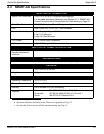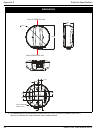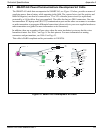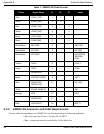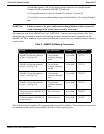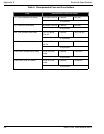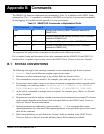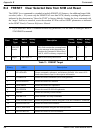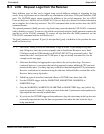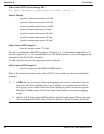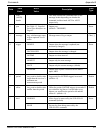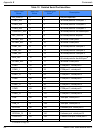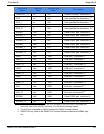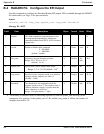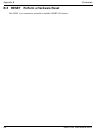
Commands Appendix B
SMART-AG User Manual Rev 2 59
B.3 LOG Request Logs from the Receiver
Many different types of data can be logged using several different methods of triggering the log
events. Every log element can be directed to any combination of the three COM ports and three USB
ports. The ONTIME trigger option requires the addition of the period parameter. See the OEMV
Firmware Reference Manual and the SMART-AG Firmware Reference Manual for further information
and a complete list of data log structures. The LOG command tables in this section show the ASCII
command format.
The optional parameter [hold] prevents a log from being removed when the UNLOGALL command,
with its defaults, is issued. To remove a log which was invoked using the [hold] parameter requires the
specific use of the UNLOG command. To remove all logs that have the [hold] parameter, use the
UNLOGALL command with the held field set to 1.
The [port] parameter is optional. If [port] is not specified, [port] is defaulted to the port that the com-
mand was received on.
1. The OEMV family of receivers can handle 30 logs at a time. If you attempt to log more
than 30 logs at a time, the receiver responds with an Insufficient Resources error. Each
COM port (serial and USB) already has RXSTATUSEVENT log associated with it. This
means that with 3 serial ports and 3 USB ports, 6 logs are already accounted for. See the
example on the next page.
2. Maximum flexibility for logging data is provided to the user by these logs. The user is
cautioned, however, to recognize that each log requested requires additional CPU time and
memory buffer space. Too many logs may result in lost data and degraded CPU performance.
Receiver overload can be monitored using the idle-time field and buffer overload bits of the
Receiver Status in any log header.
3. Polled log types do not allow fractional offsets or ONTIME rates faster than 1Hz.
4. Use the ONNEW trigger with the MARKTIME, MARK2TIME, MARKPOS or
MARK2POS logs.
5. Only the MARKPOS, MARK2POS, MARKTIME or MARK2TIME logs, and ‘polled’ log
types are generated ‘on the fly’ at the exact time of the mark. Synchronous and asynchronous
logs output the most recently available data.
6. If you do use the ONTIME trigger with asynchronous logs, the time stamp in the log does not
necessarily represent the time the data was generated, but rather the time when the log is
being transmitted.



